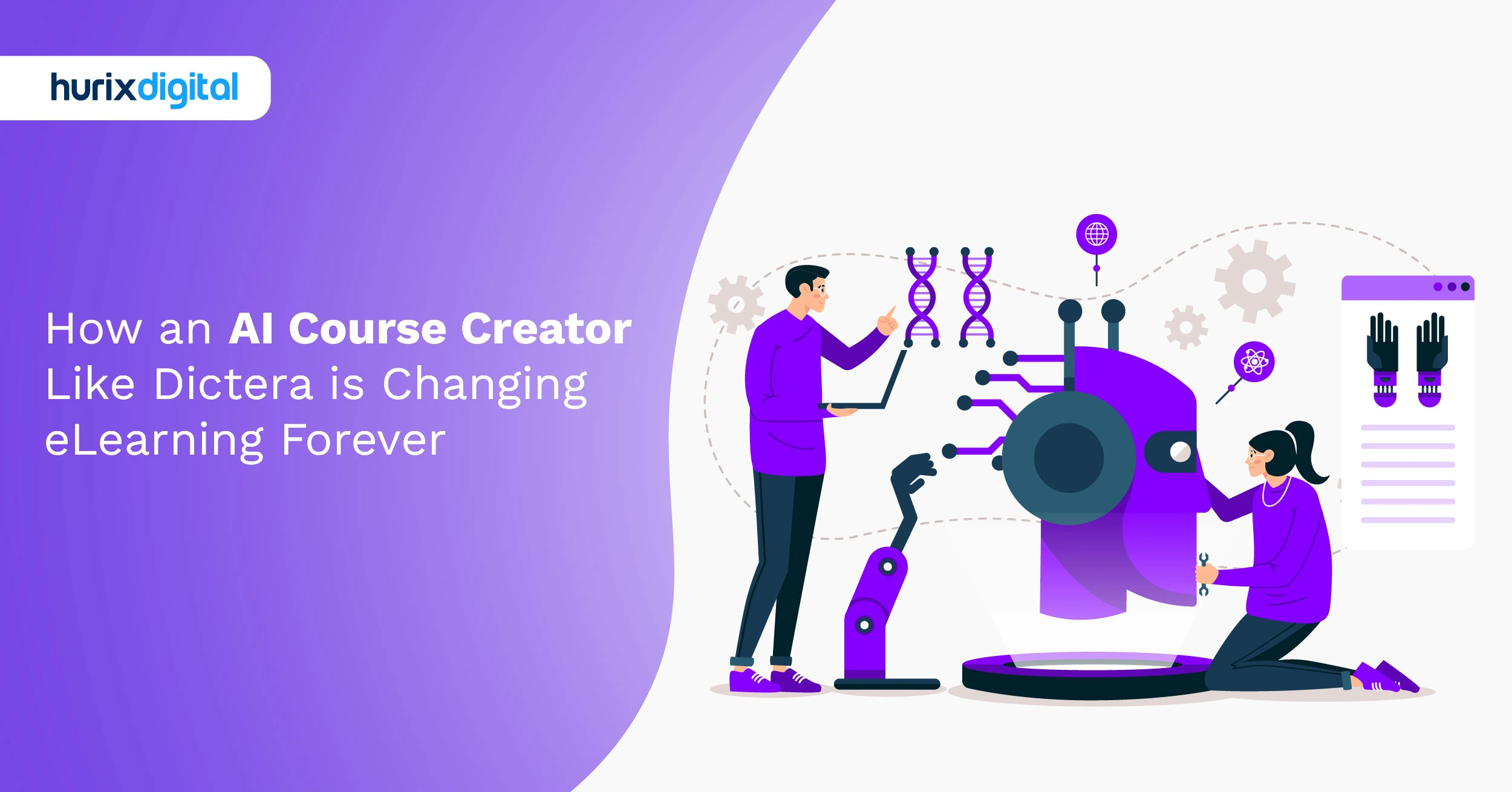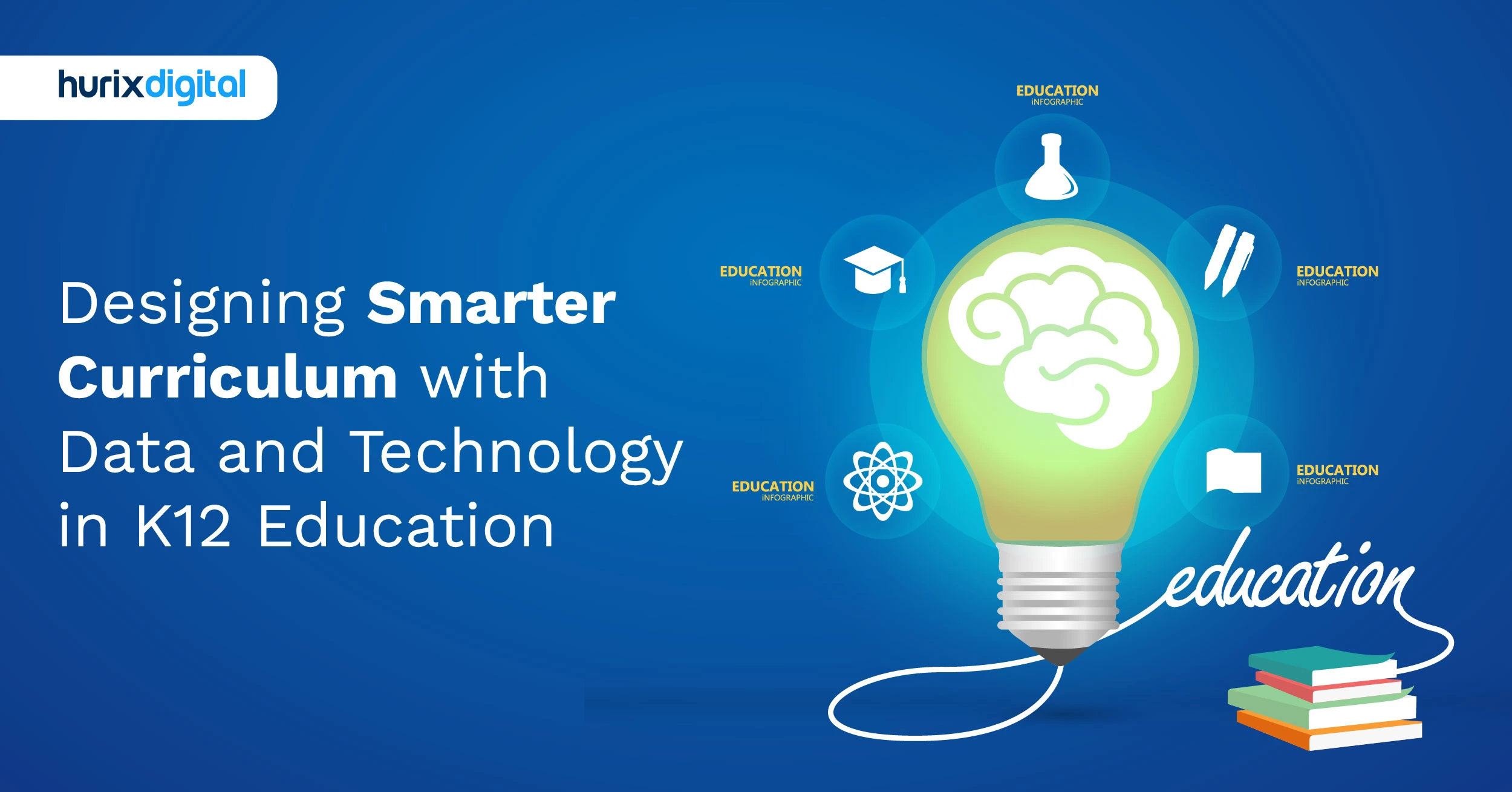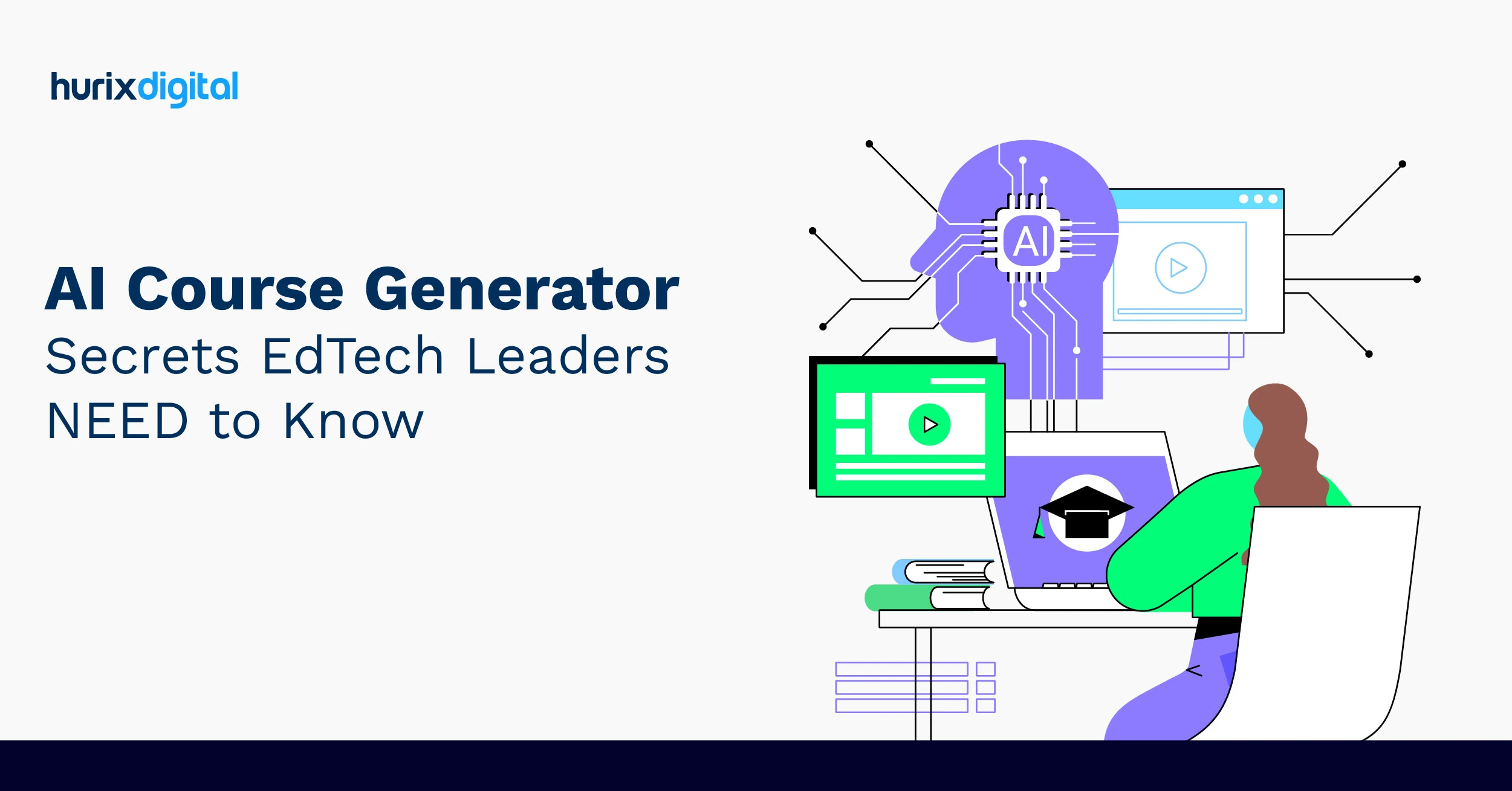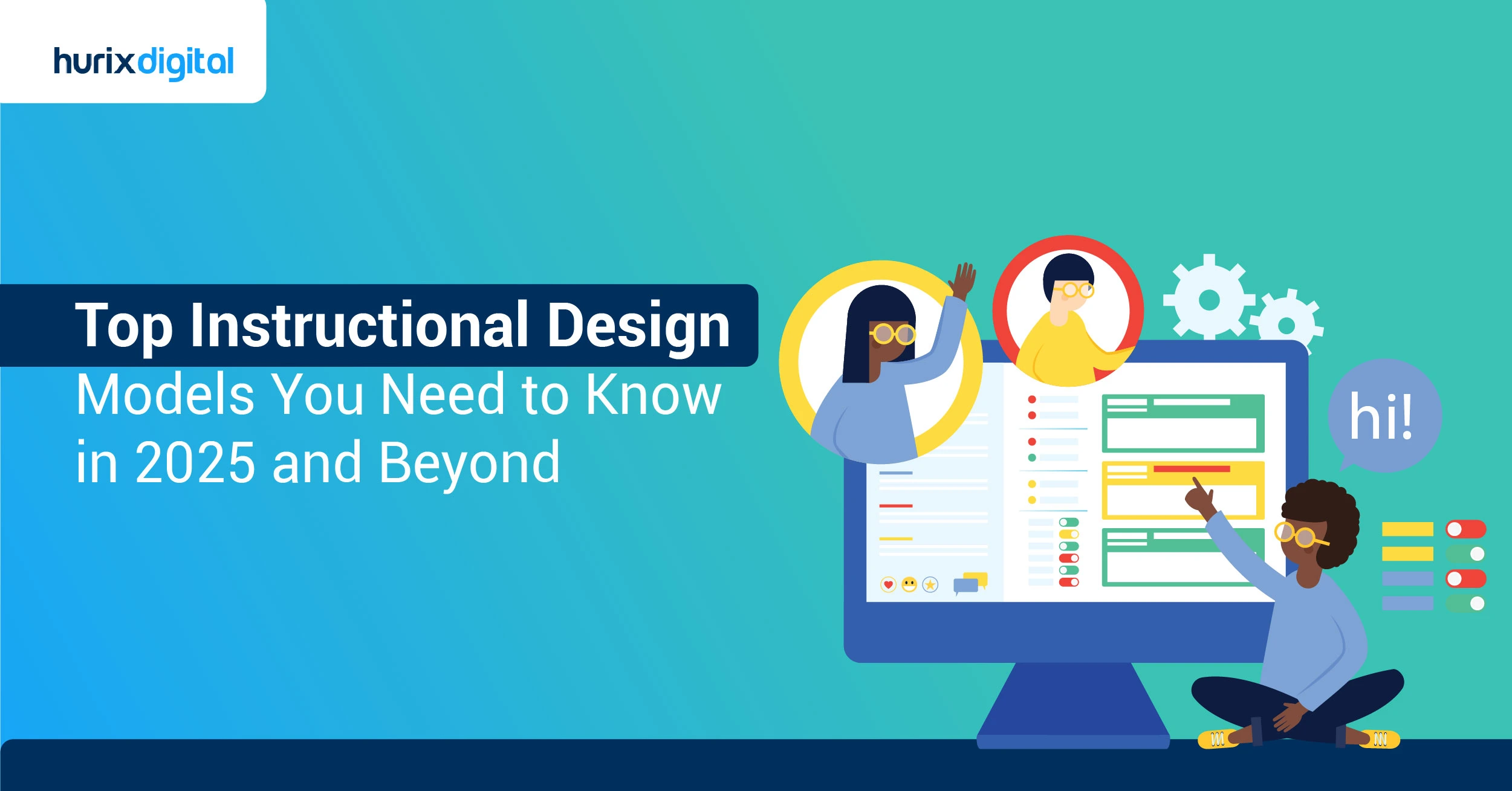
Top Instructional Design Models You Need to Know in 2025 and Beyond!
Summarize with:
The world has changed immensely in just 2 decades. These changes have affected everything, from humans to business, and in today’s competitive world, we are always stuck on a common question: How can we make learning truly effective?
Here’s where instructional design models come into play. These models have transformed modern learning experiences to be more engaging and effective.
According to a report, instructional designer roles are expected to grow 11% between 2016 and 2026. This profession is growing due to an increasing awareness of designing structured, engaging, and accessible eLearning content that meets learners’ needs.
In this blog, we will talk about instructional design models that revolutionize how we approach education and training so you can be better prepared.
Table of Contents:
- What is an Instructional Design?
- What are Adaptive Learning Technologies?
- What are the 5 Key Components of Adaptive Learning Technologies?
- Comparison Table of Instructional Design Models
- Deep Dive into the Top 8 Instructional Design Models
- Tips for Creating Instructional Design
- Conclusion
What is an Instructional Design?
Instructional design refers to the process of designing instructional and educational material.
The steps involved in creating an instructional design are planning the course content, analyzing the learners’ needs, developing the content, implementing it, and finally evaluating it.
The last step of gathering feedback and evaluating is very important as it determines the effectiveness of the instructional design.
What are Adaptive Learning Technologies?
Adaptive learning technologies can be understood as instructional tools that utilize the latest digital tools, like artificial intelligence, machine learning, natural language processing, etc., to personalize and improve the learners’ learning experience.
With an adaptive learning pace, all the elements of the instructional design, like delivery pace, content, visual aids, teaching method, etc., can be adapted and aligned according to the needs of the learners. This ensures a more effective learning experience and a more inclusive learning process.
For instance, adaptive learning technologies can be easily integrated with assistive technologies like speech recognition, magnification tools, alternate input devices, and much more to assist learners with disabilities.
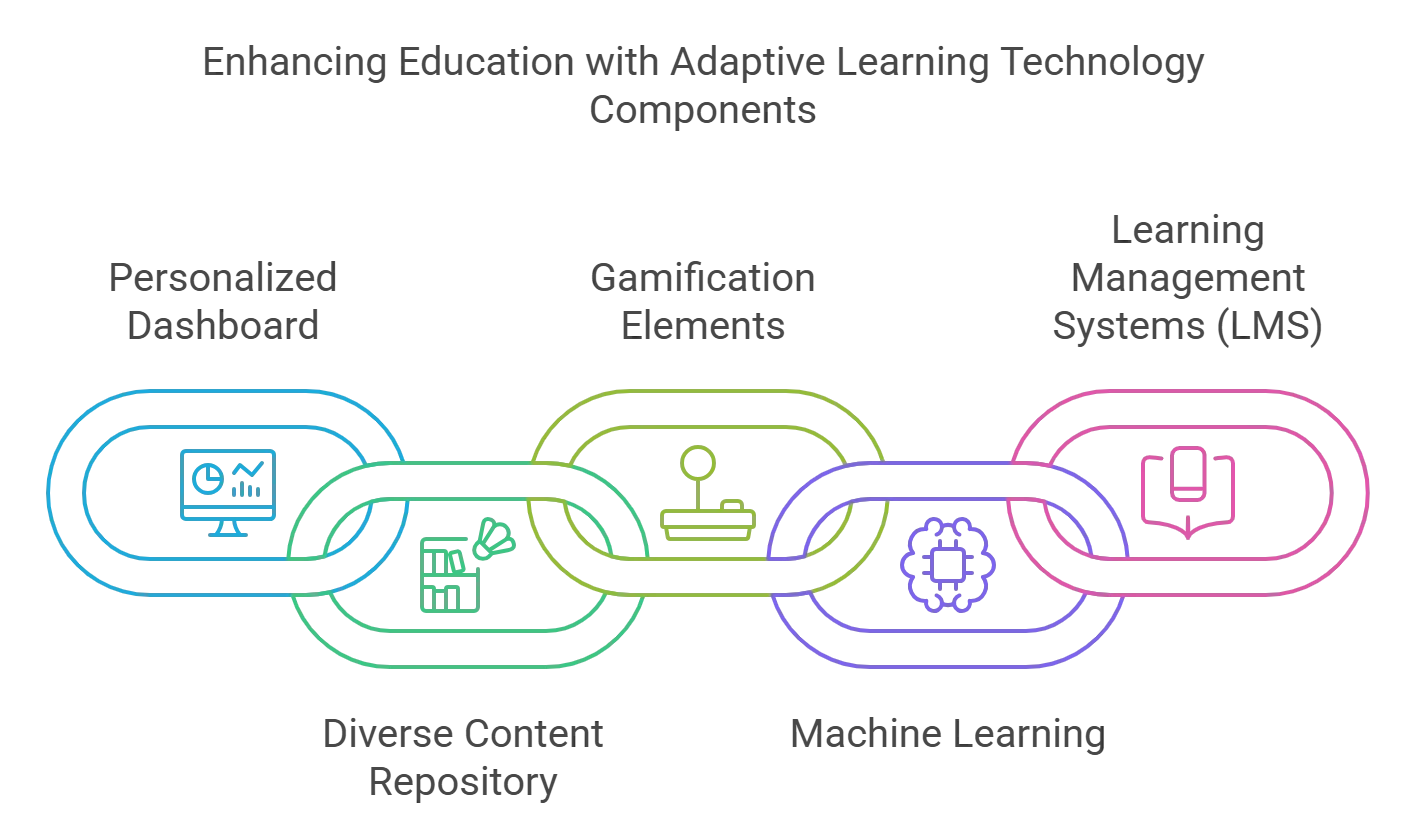
What are the 5 Key Components of Adaptive Learning Technologies?
Various features and functionalities of adapting learning technologies work simultaneously to help educators create a personalized learning experience for learners. All the features have been designed keeping in mind the learners’ requirements and proficiencies.
Mentioned here are some key components of adaptive learning technologies:
1. Personalized Dashboard
The personalized dashboard or the personalized engine is the control center of adaptive learning technology. You can create personalized learning paths for all your learners through this control center.
You can also continue updating them as the learners progress in their learning journey. To keep the learners creatively engaged, you can add a variety of other activities, such as assessments, pop quizzes, leaderboard competitions, etc.
2. Diverse Content Repository
As an educator, you will have to create a vast and diverse content repository of textual material, multimedia elements, assessments and quizzes, and much more.
You can create and maintain a content repository easily and efficiently with adaptive learning platforms. Content repositories ensure the personalized education of learners is solid and all knowledge gaps are addressed effectively.
3. Gamification Elements
Gamification elements play a crucial role in inculcating self-motivation and self-direction in learners. The interactive environment and the dynamic reward systems instill a sense of accomplishment in the learners.
This encourages them to strive for the best results. Gamification elements that can be integrated with adaptive learning technologies are badges, rewards, redeemable points, etc.
4. Machine Learning
Machine learning and its various features help deliver a highly personalized learning experience to learners. These include data analytics and reporting, automated pattern identification, content recommendation, predictive analytics, content tagging, and group profiling.
As learners interact with the platform, the machine learning functionalities become more precise in predicting their requirements.
5. Learning Management Systems (LMS)
Learning management systems play a crucial role in enhancing the delivery mechanisms of adaptive learning technologies. If top-quality learning material is not delivered effectively, it will fail to reap any benefits.
Consequently, with LMS, you can streamline your content delivery workflows for the advantage of both learners and instructors.
Additionally, with performance tracking, LMS can also identify which delivery method worked the best for the learners and why. It can then automatically incorporate the relevant strengths and positive feedback in the upcoming content delivery schedules.
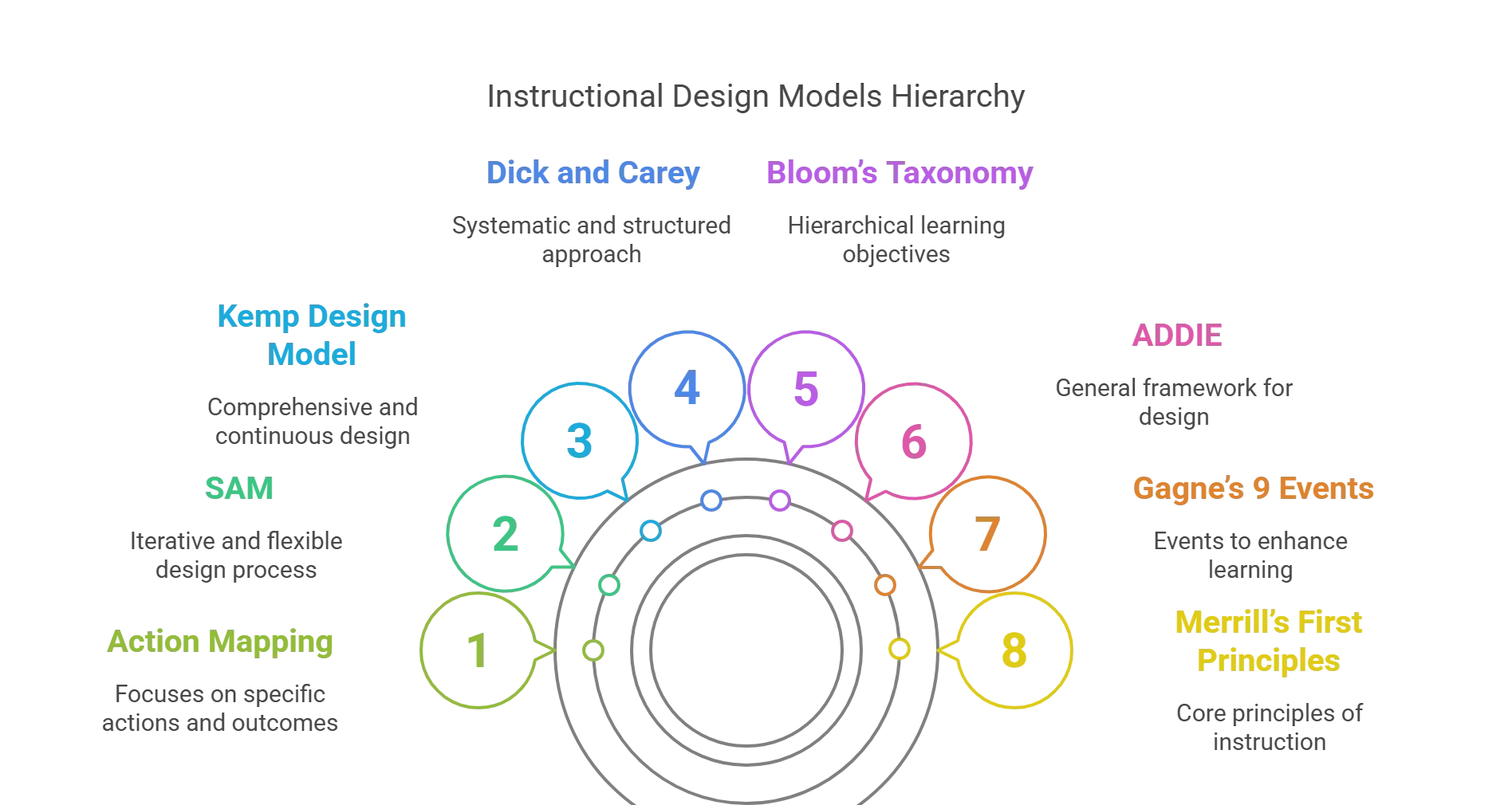
Comparison Table of Instructional Design Models
| Model | Core Focus | Process/Phases | Best For | Strengths | Limitations |
|---|---|---|---|---|---|
| ADDIE (Analysis, Design, Development, Implementation, Evaluation) | Systematic design | 5 linear stages | Corporate training, eLearning | Clear, structured, widely recognized | Can be rigid, less adaptive |
| SAM (Successive Approximation Model) | Rapid prototyping | Iterative cycles of design & feedback | Agile learning projects, fast-moving industries | Flexible, iterative, faster turnaround | May lack depth if not managed well |
| Kemp Model | Holistic & learner-centered | Non-linear steps covering objectives, content, support | Academic learning, blended learning | Comprehensive, adaptable | Complex to manage, requires skilled IDs |
| Merrill’s Principles of Instruction | Task-centered learning | 5 principles: Activation, Demonstration, Application, Integration, Problem-centered | Skills-based training, technical learning | Emphasizes real-world tasks, promotes mastery | Less focus on long-term engagement |
| ARCS Model (Attention, Relevance, Confidence, Satisfaction) | Learner motivation | 4 motivational components | Engagement-focused programs, K12 & higher education | Strong motivational framework, improves learner buy-in | Does not cover full instructional design cycle |
| Gagné’s Nine Events of Instruction | Cognitive learning | 9 instructional steps | Classroom & online instruction | Easy to apply, step-by-step clarity | Can feel prescriptive, dated |
| ARCHED (2025+) | AI-driven, adaptive, ethical design | Analysis → Responsible AI → Collaboration → Human-centered → Evaluation → Data | Future-ready learning, AI in education & corporate | Integrates AI, personalization, ethics | Still emerging, limited adoption examples |
Deep Dive into the Top 8 Instructional Design Models
instructional design models provide structured approaches to designing, developing, and delivering training material for learning experiences that are engaging, efficient, and outcome-driven.
Let’s discuss the key features of each of these top 8 models in 2025:
1. Merrill’s First Principles of Instruction
Merrill’s First Principles of Instruction, developed by David Merrill, focuses on problem-based learning and real-world application through learning. The model addresses the engagement of learners’ practical skill development by weaving new knowledge into their experienced reality.
This model encourages learning through active participation and reflection as it focuses on providing relevant and applicable tasks within real-life situations.
Merrill’s Principles of Instruction (MPI) for 2025
- Task-Centered: Design training around the real world.
- Activation: Build from where the learners are and link new content to their prior experiences.
- Demonstration: Use examples, models, or case studies to demonstrate new skills or concepts effectively.
- Application: Provide learners opportunities to practice skills in realistic situations accompanied by constructive feedback.
- Integration: Engage the learners in applying their new knowledge in everyday tasks, thereby enhancing retention and usability.
2. Gagne’s 9 Events
Gagne’s 9 Events model, rooted in cognitive psychology principles, outlines a structured approach to instructional design that enhances learning and retention.
This model aims to guide educators in creating engaging and effective learning experiences that promote understanding and long-term memory retention by breaking down the learning process into nine key events.
3. ADDIE
ADDIE instructional design model, based on five phases of a systematic process: analysis, Design, Development, Implementation, and Evaluation. In doing so, it helps deliver well-structured learning experiences.
From initial analysis to final evaluation, ADDIE’s systemic approach ensures that instructional materials are produced with clear objectives and outcomes.
- Analysis: This step includes identifying training needs, a statement of learning objectives, and information about the target audience. It ensures that the course addresses the right problems and meets the objectives.
- Design: It elaborates a precise action plan to accomplish learning objectives. This includes outlining the structure of content flow, instructional design approaches, and assessment techniques.
- Development: This step is on developing learning elements using tools and storyboards. This stage translates ideas into actual course elements like slide presentations, videos, or interactive modules.
- Implementation: Present the course to learners emphasizing successful knowledge transfer. Effective implementation guarantees that learners can use the content in real life.
- Evaluation: Evaluate the effectiveness of the course by determining if the learning objectives are achieved. Use this evaluation to make changes or to start the ADDIE cycle again.
4. Bloom’s Taxonomy
Bloom’s Taxonomy is a hierarchical model that categorizes educational objectives into cognitive domains. It provides educators with a framework for developing learning objectives aligned with different levels of cognitive complexity.
By categorizing learning goals into distinct levels, Bloom’s Taxonomy helps educators design assessments and activities that target specific cognitive skills.
Bloom’s Taxonomy: Six Cognitive Phases
- Knowledge: The base for deeper learning is to recall essential facts, concepts, or definitions from memory.
- Comprehension: Summarize, explain, or paraphrase information to demonstrate an understanding of it.
- Application: Apply learned concepts to solve problems or address real-world issues.
- Analysis: Separate complex ideas into smaller parts, identifying patterns and relationships while understanding how the different parts contribute to the final goal.
- Evaluation: Assess and critique information or processes against pre-set criteria to make informed decisions.
- Creation: Combining ideas to form new concepts or solutions promotes innovation and greater understanding.
5. Dick and Carey
Dick and Carey’s instructional design approach is a comprehensive and systematic model that places a strong emphasis on personalized learning approaches by analyzing learner characteristics and task requirements to develop customized and effective learning experiences.
This model ensures a structured and learner-centered approach to instructional design by identifying instructional goals, conducting thorough analysis, and focusing on performance objectives.
- Identify instructional goals
- Conduct instructional analysis
- Analyze learner and context
- Write performance objectives
- Develop assessment instruments
- Develop instructional strategy
- Develop and select instructional materials
- Design and conduct formative evaluation
6. Kemp Design Model
The Kemp Design Model is a dynamic and flexible instructional design approach that emphasizes adaptability throughout the design process.
By incorporating analysis, design, development, implementation, and evaluation in a cyclical manner, this model allows for iterative improvements and adjustments based on feedback and evaluation results.
- Analysis
- Design
- Development
- Implementation
- Evaluation
7. SAM (Successive Approximation Model)
SAM (Successive Approximation Model) is an agile instructional design model that prioritizes rapid prototyping and iterative development to create efficient and effective learning solutions.
This model focuses on preparation, iterative design, development, and evaluation, enabling quick turnaround projects and continuous improvement through feedback loops.
- Preparation
- Iterative Design
- Iterative Development
- Iterative Evaluation
8. Action Mapping
Action Mapping is a visual instructional design approach that aligns learning objectives with business goals to create impactful and goal-oriented learning experiences.
This model ensures that training programs are directly linked to desired outcomes by identifying business goals, defining performance objectives, and designing learning experiences aligned with organizational objectives.
Action Mapping: A four-step approach that proves the results
- Define Measurable Business Objectives: Align training to measurable and tangible outcomes
- Specify Learner Actions: Identify actions that learners should undertake for business objectives
- Develop Practice Exercises: Design authentic tasks to help learners practice their skills effectively.
- Use Relevant Content: Remove irrelevant information to make training concise and meaningful.
Tips for Creating Instructional Design
Here are some key instructional design strategies to consider when creating effective learning experiences:
-
Correctly determine the learners’ needs and preferences before setting the instructional design strategies and learning objectives.
-
Just like one size doesn’t fit all, not all adaptive learning technologies align with your instructional design strategies. Select the ones that properly support your learning objectives.
-
Ensure the instructional design strategies are creative and engaging. To increase learners’ retention, add interactive elements like quizzes, scarcity games, mixed reality, AI-powered gamification, etc.
-
Leverage the maximum potential of learning analytics through instructional design strategies to provide data-driven instructions and continuously enhance the learning experience.
-
The digital world is advancing rapidly. Stay updated with the latest technologies to incorporate them into your instructional design strategies and improve learning outcomes.
Conclusion
Paying close attention to your instructional design strategies can provide learners with a meaningful and productive learning experience. Stay updated with the latest adaptive learning technologies to enhance these strategies.
You can also incorporate them in alignment with learning styles, abilities, and preferences. The intelligent tutoring systems market is very competitive, and this can give you a competitive edge.
If you need help with it, you can reach out to us at Hurix Digital. As one of the leading digital services providers, we can address all your instructional design strategies and adaptive learning technology needs. We offer digital content transformation, digital engineering, robotic process automation, and more.
We have a global customer base. Some of our customers include Ikea, Cambridge University Press, Deloitte, Cathay Pacific, and FedEx Express. You can become our next customer and grow with us.
Contact our expert team now and get started. Hope to see you soon!
Summarize with:

Senior Vice President
Julia brings over 20 years of global experience in digital learning and business strategy. She specializes in client success, enterprise learning solutions, and driving growth through innovation, with a focus on AI, VR, and emerging technologies across diverse industry verticals.
 Upcoming Masterclass | Build an Army of Brand Evangelists using Training & Development | November 20th, 8:30 AM PDT | 11:30 AM EDT | 10:00 PM IST
Upcoming Masterclass | Build an Army of Brand Evangelists using Training & Development | November 20th, 8:30 AM PDT | 11:30 AM EDT | 10:00 PM IST

